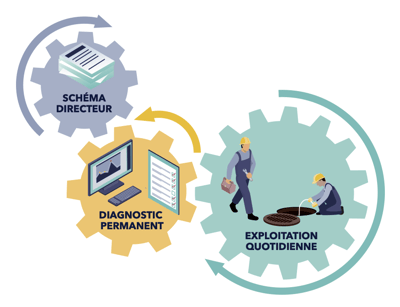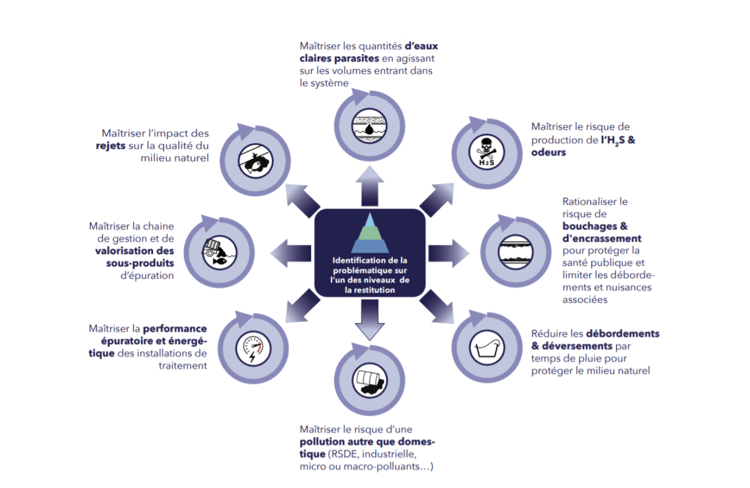In principle, the aim of continual diagnostic analysis is to ensure wastewater treatment systems in terms of environmental protection, public health and the long-term sustainability of infrastructure assets. The legal obligation on local authorities to implement such analytical systems was postponed to the end of December 2021 to allow all those involved to address the multiple issues around this problem and prepare effectively for introducing this new measure.
At the global level, the wastewater generated by 2.6 billion people is discharged untreated into the natural environment. Although France is world leader in wastewater systems and treatment, the country still faces significant challenges in terms of the environment and infrastructure assets.
The decree of July 21st, 2015 and subsequent amending decree of July 31st, 2020 finally introduced the key measures required to address these issues effectively in the form of continual diagnostic analysis.
The order defines for clearly stated goals:
- To provide a continuous flow of information about the operational and structural status of the system
- To prevent or identify malfunctions at the earliest-possible opportunity
- To monitor and assess the effectiveness of actions implemented
- To embrace the principle of operational continuous improvement
Continual diagnostic analysis of wastewater treatment systems is specific to local authorities
The purpose of introducing continual diagnostic analysis of wastewater treatment systems is to link the master plan with the annual report published by the concession holder and the annual assessment of the wastewater treatment system.

It is intended to improve service performance by monitoring the impact of past actions and work, at the same time as forecasting the future actions and investments to be planned for as part of a closed-loop continuous improvement circuit. One of its most notable features is that it is designed to address the specific circumstances and needs of each local authority by being adaptable to local challenges and contexts.
If the analyses are to be conducted by the contracting authority responsible for the wastewater treatment system, the tools and practices implemented, and the criteria addressed, are based on its operational knowledge and features specific to the locality. Depending on the local context, continual diagnostic analysis of the wastewater treatment system will be based on field investigations appropriate to the issues identified: acoustic and video inspection of pipelines, inspections of problematic connections, monitoring of flows and pollution loads passing through the pipeline network, monitoring of discharges, etc.

Introduction postponed by one year
The July 21st, 2015 ministerial order required urban communities with population equivalents (PE) of 10,000 or greater to implement continual diagnostic analysis by the end of 2020. However, the amending order of July 31st, 2020 published last October extended this deadline to December 31st, 2021. It also expanded the scope of application to include local authorities with PEs of between 2,000 and 10,000 by the end of 2024.
This change in the introduction date for continual diagnostic analysis of wastewater treatment systems was designed to give local authorities more time to precisely outline the specific approach they wanted to adopt. The ultimate aim is to build a robust system of continual diagnostic analysis that is capable of providing a comprehensive global overview of the entire wastewater treatment system (existing and potential risks, actions for implementation, impact of previous actions and works, etc.).

Regardless of the local authority concerned, there are still many questions that need to be answered as part of implementing this new system:
- How can wastewater treatment data be made more reliable in terms of quality and consistency?
- How will data from different stakeholders and sources be managed?
- How will it be possible to ensure that the service performance overview covers all the risks that exist within the local authority region, while focusing on the most important issues?
- How will it be possible to address all the features specific to the local authority in its entirety, and also its individual communities?
- How can the process be structured to measure the impact of work done by the local authority?
- Which indicators should be monitored, how often and on what scale?
- How can continual diagnostic analysis be used to create and feed a closed-loop continuous improvement circuit for service performance?
A substantial amount of work remains to be done before local authorities are in a position to deploy continual diagnostic analysis of their wastewater systems.
For more information, please contact us: